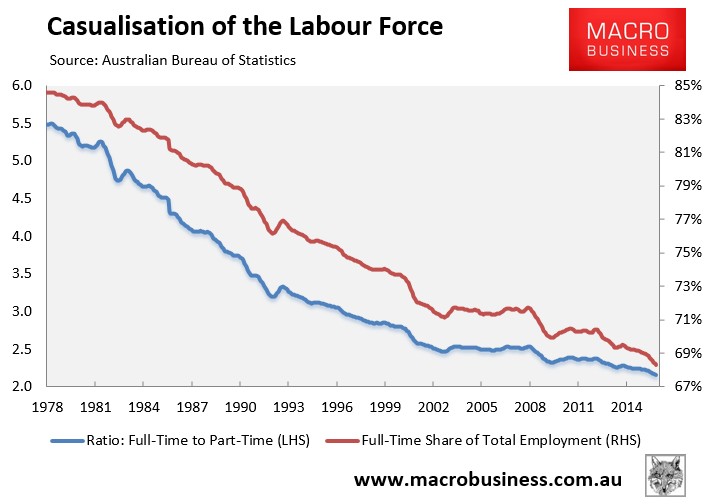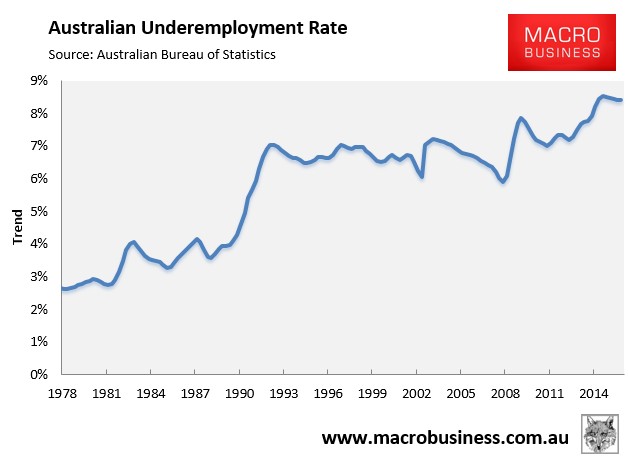For decades we have witnessed the steady decline of full-time employment and the gradual ‘casualisation’ of the Australian labour market:

While some of this has been voluntary – driven by the rise of women in the workplace, most of whom work part-time – Australia’s underemployment rate is also tracking near an all-time high 8.4%, meaning that there are many employees that would like to work more hours:

On Wednesday, The ABC’s Antony Funnell asked whether the era of full-time work is over:
‘If we look back 10 years ago, probably 90 per cent of the workforce was in a permanent kind of job arrangement. I think you’re going to see that drop down to half of the workforce or less in the next few years’…
Bill Mitchell from the Centre for Full Employment and Equity at the University of Newcastle points out that in the past 12 months, 86 per cent of the total net jobs created in Australia were part-time in nature.
Mitchell sees this as a negative development, and recently commented that the figures demonstrate that we’re on our way to becoming a nation of ‘part-time employment growth’.
For Kevin Wheeler though, there are swings and roundabouts: ‘Clearly those people in that space have less security, have less certainty around the benefits that they receive. But on the other hand, they are vastly more liberated from the constraints of the work environment.
‘They can choose their place of work, their hours of work, what they actually do for work, who they choose to work with or for. It is very liberating for those people, but they trade the liberation for less security.’…
Monash University’s Tui McKeown’s… research suggests many in Australia’s contingent workforce are finding it difficult to make ends meet.
‘These are people going from one job, one gig to the next. They are working in multiple jobs at once. The worst I’ve come across is somebody who has got 12 different identities all registered as separate businesses.
‘It does seem to be increasing. It is a huge concern for bodies like the unions, obviously for the International Labour Organisation and the rest, that we may be in the process of creating a race to the bottom.’
Whether the casualisation of the workforce is good or bad is in the eye of the beholder. I personally do not like it, but accept that it is an inevitable outcome of globalisation and the hollowing-out of Australia’s economy.
Where growth in part-time employment, rather than full-time work, becomes a problem (and is undesirable) in when there is growth in the number of workers who are not working as much as they would like. As shown in the second chart above, underemployment in Australia is running at near record highs. This means that there is a large pool of underutilised workers and many Australians are being left behind.
Sadly, the situation is likely to get worse as the manufacturing sector continues to shrink, more mining jobs disappear, housing construction begins to unwind, and technological change (e.g. robots and artificial intelligence) accelerates.

